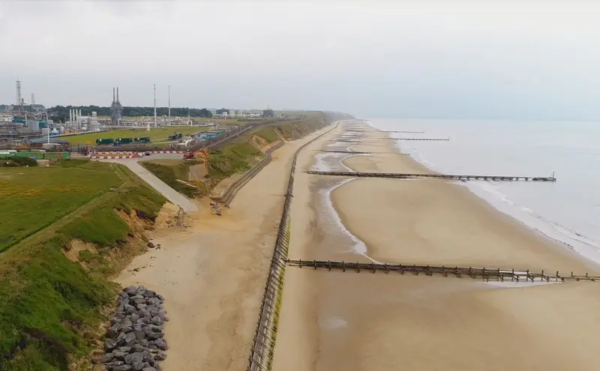The North Sea Transition Authority (NSTA) announced the list of companies which have accepted licences following the UK’s first-ever carbon storage licensing round.
A total of 14 companies have been awarded 21 licences in depleted oil and gas reservoirs and saline aquifers which cover around 12,000sq km – an area equivalent to the size of Yorkshire.
The locations could store up to 30 million tonnes of CO2 per year by 2030, approximately 10% of UK annual emissions which were 341.5 million tonnes in 2021.
Shell, Perenco and ENI have all been awarded licences off the coast of Norfolk in sites which could form part of the Bacton Energy Hub – a carbon storage, hydrogen and offshore wind project, which could provide low-carbon energy for London and the South East for decades to come and help in the drive to net zero greenhouse gas emissions.
Other locations include sites off the coasts of Aberdeen, Teesside, and Liverpool.
It is estimated that as many as 100 storage licences will be needed to meet the requirements for reaching net zero and the volume of applications received for the first round demonstrated the industry’s desire for further opportunities.
The NSTA will assess the response and the quality of opportunities in locations across the UK before deciding when to run a second round.
Six licences have already been granted by the NSTA and the Government recently announced £20bn funding for the progression of these existing projects. Two locations, Hynet and the East Coast Cluster, have been selected as Track 1, while Acorn and Viking CCS projects have been chosen as the Track 2 clusters.
Ruth Herbert, Chief Executive at the Carbon Capture and Storage Association, said:
“The CCSA welcomes the acceptance of carbon storage licences, a significant step towards achieving net zero. These licences mark a substantial milestone towards widespread deployment of CCS.
“With the potential to store almost 10% of the UK’s greenhouse gas emissions in these new locations, starting to develop these sites paves the way for a cleaner and more sustainable future. The next step is a carbon capture deployment plan to enable us to fully exploit our future CO2 storage capacity.”
The NSTA, The Crown Estate (TCE) and Crown Estate Scotland (CES) are working in close collaboration to help meet the UK Government’s ambitious carbon storage targets of 20-30 million tonnes of CO2 emissions per year by 2030, and over 50 million tonnes by 2035, and make a significant contribution to net zero.
The full news piece can be read here.
